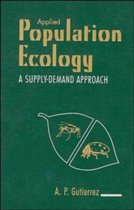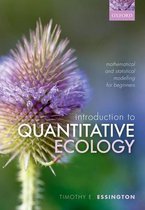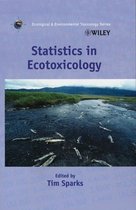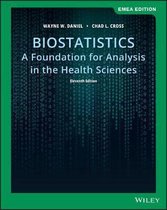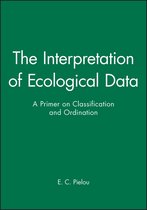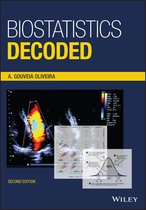How To Be A Quantitative Ecologist The 'A to R' of Green Mathematics and Statistics
Afbeeldingen
Sla de afbeeldingen overArtikel vergelijken
Uitgever: John Wiley & Sons Inc
- Engels
- Paperback
- 9780470699799
- 18 april 2011
- 490 pagina's
Samenvatting
Ecological research is becoming increasingly quantitative, yet students often opt out of courses in mathematics and statistics, unwittingly limiting their ability to carry out research in the future. This textbook provides a practical introduction to quantitative ecology for students and practitioners who have realised that they need this opportunity.
The text is addressed to readers who haven't used mathematics since school, who were perhaps more confused than enlightened by their undergraduate lectures in statistics and who have never used a computer for much more than word processing and data entry. From this starting point, it slowly but surely instils an understanding of mathematics, statistics and programming, sufficient for initiating research in ecology. The book’s practical value is enhanced by extensive use of biological examples and the computer language R for graphics, programming and data analysis.
Key Features:
- Provides a complete introduction to mathematics statistics and computing for ecologists.
- Presents a wealth of ecological examples demonstrating the applied relevance of abstract mathematical concepts, showing how a little technique can go a long way in answering interesting ecological questions.
- Covers elementary topics, including the rules of algebra, logarithms, geometry, calculus, descriptive statistics, probability, hypothesis testing and linear regression.
- Explores more advanced topics including fractals, non-linear dynamical systems, likelihood and Bayesian estimation, generalised linear, mixed and additive models, and multivariate statistics.
- R boxes provide step-by-step recipes for implementing the graphical and numerical techniques outlined in each section.
How to be a Quantitative Ecologist provides a comprehensive introduction to mathematics, statistics and computing and is the ideal textbook for late undergraduate and postgraduate courses in environmental biology.
"With a book like this, there is no excuse for people to be afraid of maths, and to be ignorant of what it can do."
—Professor Tim Benton, Faculty of Biological Sciences, University of Leeds, UK
Productspecificaties
Inhoud
- Taal
- en
- Bindwijze
- Paperback
- Oorspronkelijke releasedatum
- 18 april 2011
- Aantal pagina's
- 490
- Illustraties
- Nee
Betrokkenen
- Hoofdauteur
- Jason Matthiopoulos
- Tweede Auteur
- Matthiopoulos
- Hoofduitgeverij
- John Wiley & Sons Inc
Overige kenmerken
- Extra groot lettertype
- Nee
- Product breedte
- 170 mm
- Product hoogte
- 23 mm
- Product lengte
- 246 mm
- Studieboek
- Nee
- Verpakking breedte
- 171 mm
- Verpakking hoogte
- 243 mm
- Verpakking lengte
- 25 mm
- Verpakkingsgewicht
- 828 g
EAN
- EAN
- 9780470699799
Je vindt dit artikel in
- Categorieën
- Taal
- Engels
- Boek, ebook of luisterboek?
- Boek
- Studieboek of algemeen
- Algemene boeken
- Beschikbaarheid
- Leverbaar
Kies gewenste uitvoering
Prijsinformatie en bestellen
De prijs van dit product is 49 euro en 99 cent.- Prijs inclusief verzendkosten, verstuurd door bol
- Ophalen bij een bol afhaalpunt mogelijk
- 30 dagen bedenktijd en gratis retourneren
- Dag en nacht klantenservice
Rapporteer dit artikel
Je wilt melding doen van illegale inhoud over dit artikel:
- Ik wil melding doen als klant
- Ik wil melding doen als autoriteit of trusted flagger
- Ik wil melding doen als partner
- Ik wil melding doen als merkhouder
Geen klant, autoriteit, trusted flagger, merkhouder of partner? Gebruik dan onderstaande link om melding te doen.

